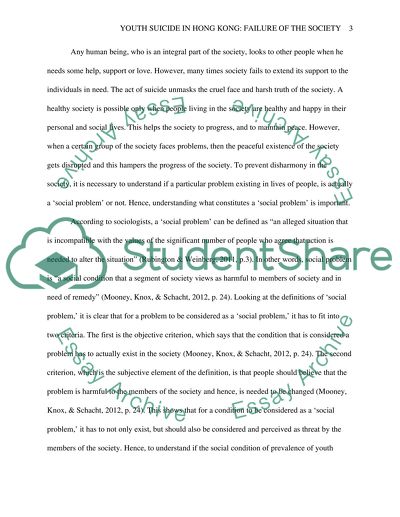Cite this document
(“Youth suicide in Hong Kong Failure of the Society Essay”, n.d.)
Retrieved de https://studentshare.org/sociology/1399740-youth-suicidal-behavior-is-a-social-problem-or
Retrieved de https://studentshare.org/sociology/1399740-youth-suicidal-behavior-is-a-social-problem-or
(Youth Suicide in Hong Kong Failure of the Society Essay)
https://studentshare.org/sociology/1399740-youth-suicidal-behavior-is-a-social-problem-or.
https://studentshare.org/sociology/1399740-youth-suicidal-behavior-is-a-social-problem-or.
“Youth Suicide in Hong Kong Failure of the Society Essay”, n.d. https://studentshare.org/sociology/1399740-youth-suicidal-behavior-is-a-social-problem-or.


